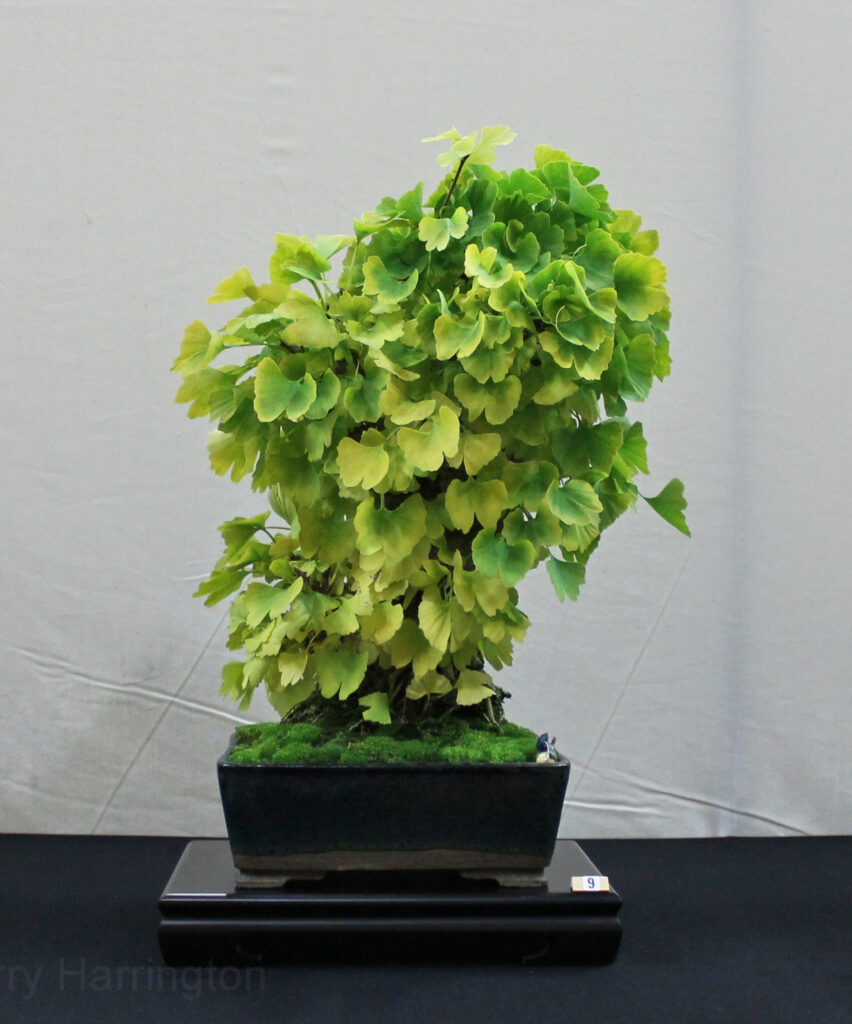
Genus of one species of deciduous, coniferous tree (gymnosperm) from South China, extinct in the wild but preserved as an ornamental tree particularly in Temple gardens in China and Japan. The ginkgo is very distinct in that though it is a conifer, it has leaves rather than the needles or scales commonly associated with dioecious trees. Its leaves are flat and fan-shaped up to 10cm across, mid-to yellow / green turning briefly to a butter yellow colour before leaf-fall. Mature specimens can reach heights of 30metres and have been known to reach ages of 1000years or more. Ginkgos produce unpleasant-smelling fleshy fruit, that contain edible nuts.
BONSAI CULTIVATION NOTES
POSITION: Full sun. Protect during winter frosts, particularly the roots which have a high moisture content and can burst in temperatures below approx.-5°C.
WATERING: Ginkgos require thorough watering but should not be grown in waterlogged compost. Keep on the dry side during winter to avoid frost damage to over wet roots.
FEEDING: Every two weeks through the growing season
REPOTTING: As buds extend in early spring annually until tree is ten years old then every second or third year. Repot in basic soil mix
PRUNING: Prune new growth through growing season, cut back branches in Autumn after leaf fall. Ginkgos do not callus over cuts and heal so large cuts should be avoided where possible particularly those made at the front.
PROPAGATION: Seed outside as soon as ripe, semi-ripe cuttings in summer. Air-layering in Spring after first flush of growth has hardened off.
PESTS AND DISEASES: Trouble free
STYLING: Ginkgos have a very narrow upright habit, for this reason are normally seen as informal and formal uprights with upswept branches in medium to large sizes.

